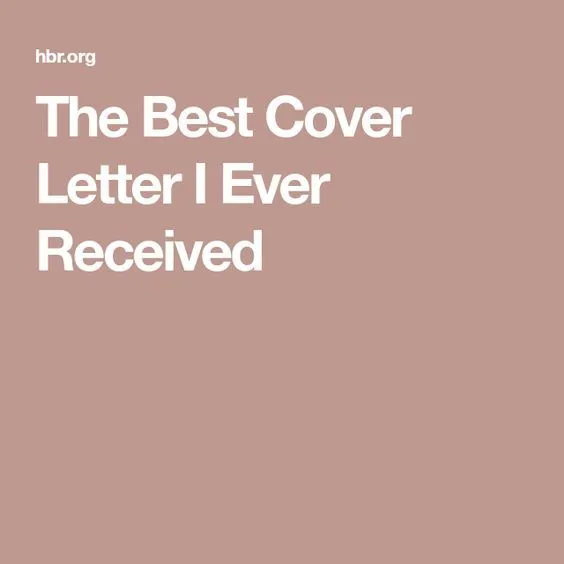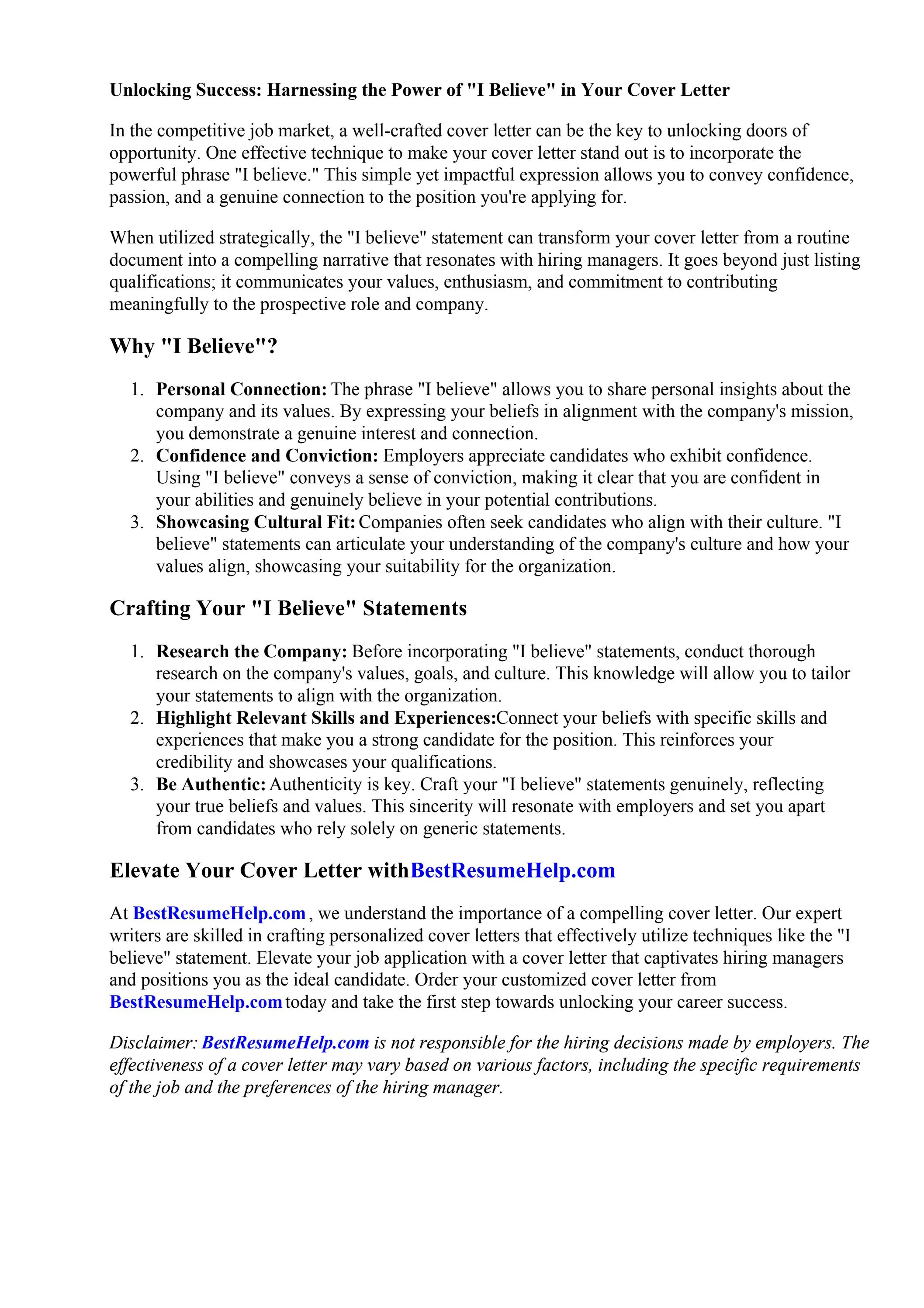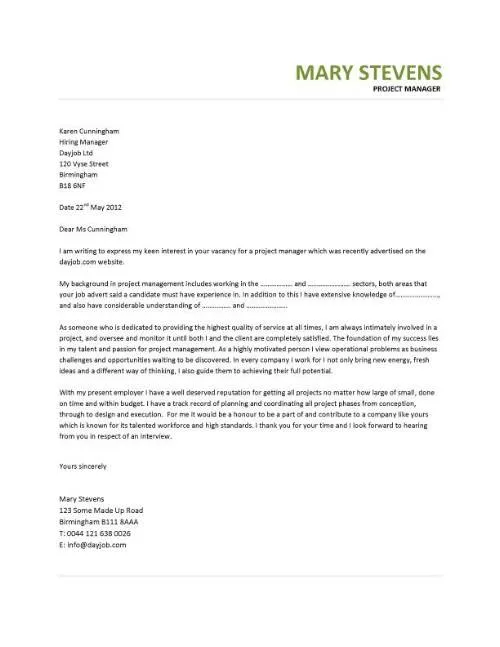Cover Letter Secrets Unveiled
In the competitive job market, a well-crafted cover letter is your first opportunity to make a lasting impression. It’s more than just a formality; it’s a chance to showcase your personality, skills, and enthusiasm for the role. This guide unveils the top 7 secrets to creating a cover letter that will not only impress but also significantly increase your chances of landing an interview. From highlighting your accomplishments to avoiding common pitfalls, we’ll cover everything you need to know to make your application stand out. A compelling cover letter is your personal brand statement, demonstrating how you fit the role and the company’s culture.
Highlighting Your Skills
Your cover letter is your chance to explicitly connect your skills with the job requirements. Don’t just list your skills; illustrate how you’ve used them effectively in previous roles. Use action verbs and provide specific examples that showcase your abilities. For instance, instead of writing ‘Proficient in project management’, you could say ‘Successfully managed multiple projects simultaneously, resulting in a 15% increase in on-time project completion.’ This specificity provides concrete evidence of your skills and demonstrates your capability. Tailor your skills to match the job description and show how they align with the company’s needs, making sure your skills are not only relevant but also demonstrable.
Quantifying Your Achievements

Numbers speak volumes. Quantifying your achievements adds significant weight to your claims. Whenever possible, use data to demonstrate the impact of your work. Instead of saying ‘Improved customer satisfaction’, quantify it by stating ‘Increased customer satisfaction scores by 20% through implementing a new feedback system.’ This use of metrics offers concrete proof of your capabilities and allows the hiring manager to quickly understand your value. Consider the impact of your actions and how it contributed to previous company success. These quantifiable results give recruiters a clear picture of what you can bring to their organization. They are also strong selling points during your interview.
Tailoring Your Letter
One-size-fits-all cover letters are easily spotted and often discarded. Always tailor your cover letter to each specific job application. Research the company and the role to understand their needs and challenges. Then, customize your letter to directly address how your skills and experience align with these specifics. Mention the company by name and refer to the job description to extract relevant keywords and phrases. Show genuine interest in the specific opportunity and explain why you are a perfect fit for that particular role, not just any role. This personal touch demonstrates effort and a sincere desire to join the organization. This level of effort is a key factor during the hiring process.
Showcasing Personality
While professionalism is key, your cover letter is also an opportunity to inject your personality. Let your enthusiasm for the role and the company shine through. Write in a tone that reflects your authentic self, but always stay within professional boundaries. Your cover letter should give a sense of who you are as a professional and how you approach work. Share your genuine interest in the field and connect your personal goals with the company’s mission. Highlighting your personal qualities can make your application more memorable and can help differentiate you from other applicants. Remember, employers are not just looking for skills; they want to bring passionate people to their teams.
Avoiding Common Mistakes

Generic Letter Issues
Generic cover letters are a major turn-off. They indicate a lack of effort and a lack of interest in the specific role. Avoid using templates directly without significant customization. Hiring managers can easily tell when a letter hasn’t been tailored, which can lead to immediate rejection. Ensure every cover letter is addressed to the correct person (when possible) and mentions the company and role specifically. Demonstrate that you have researched the company and understand the role’s requirements. Generic letters show a lack of genuine interest and can be a hindrance to your application. Dedicate time and effort to create letters that stand out and make you look more engaged.
Typos and Grammatical Errors
Typos and grammatical errors can instantly undermine your credibility. They demonstrate a lack of attention to detail, a critical skill in many roles. Proofread your cover letter carefully before submitting it. Use spell-check and grammar-check tools, but don’t rely on them entirely. These tools may miss subtle errors. Have someone else review your letter to catch any mistakes you might have overlooked. A well-written, error-free cover letter reflects professionalism and attention to detail. Errors can create a negative first impression, leading to your application being rejected. Always proofread and double-check your work.
Lack of Research

Failing to research the company and the role is a significant error. Without demonstrating that you understand the company’s mission, values, and the specific requirements of the job, your letter will appear unfocused. Research the company’s website, social media, and recent news to understand its current projects and goals. Analyze the job description carefully, identifying the key skills and experiences the employer is seeking. Tailor your cover letter to match these requirements, highlighting how your background aligns with the company’s needs. This type of research shows your commitment to the job and that you are not just applying for any position but are specifically interested in this one.
Formatting Faux Pas
Poor formatting can make your cover letter difficult to read, which can deter the hiring manager. Ensure your letter is formatted in a clear, professional manner. Use a readable font like Arial or Times New Roman and maintain a consistent font size. Keep the paragraphs short and easy to digest. Use bullet points to highlight key skills or achievements. Avoid overly complex formatting or excessive use of bolding and underlining. Pay attention to the spacing and margins to create a clean and uncluttered appearance. A well-formatted cover letter enhances readability and makes a positive first impression. Formatting can also be a part of your creative expression but should not distract from the core message.
Structuring Your Cover Letter
Header Essentials

The header is the first element of your cover letter, and it sets the tone. Include your full name, contact information (phone number and email address), and the date. If you know the hiring manager’s name, include their name and title, and the company’s name and address. If you do not know the hiring manager’s name, address the letter to the Hiring Manager or the appropriate department. This professional header ensures the recruiter can easily identify you and contact you if necessary. Make sure your contact information is accurate and up-to-date. Double-check the spelling of the hiring manager’s name to show attention to detail.
Opening Paragraph
The opening paragraph is your chance to grab the reader’s attention. State the specific position you are applying for and where you saw the job posting. Briefly mention why you are interested in the role and the company. Highlight a key skill or experience that immediately relates to the job requirements. Make your opening concise and compelling, setting the stage for the rest of the letter. Avoid generic phrases such as ‘I am writing to express my interest…’ Instead, start with a strong, engaging sentence that immediately demonstrates your understanding of the company and the role. The introduction is the most important part.
Body Paragraphs
The body paragraphs should expand on your skills, experiences, and achievements. Use these paragraphs to showcase your qualifications and explain how you meet the job requirements. Provide specific examples and use the STAR method (Situation, Task, Action, Result) to illustrate your contributions. Tailor your content to match the job description, and focus on the most relevant aspects of your background. Keep the paragraphs focused and easy to follow, and use strong action verbs. Show, don’t just tell, what you’ve accomplished. Each paragraph should work to support your central claim: that you are the perfect candidate.
Closing Strong

The closing paragraph should reiterate your interest in the role and the company. Thank the hiring manager for their time and consideration. Include a call to action, such as stating that you are available for an interview and look forward to discussing your qualifications further. Ensure your closing is professional and reflects your enthusiasm for the opportunity. Double-check your contact information to facilitate a quick response. A strong closing confirms your interest and leaves a positive final impression.
The Importance of Keywords
In today’s job market, keywords are crucial. Many companies use Applicant Tracking Systems (ATS) to scan cover letters and resumes. These systems look for specific keywords and phrases related to the job description. Including the right keywords can significantly increase your chances of your cover letter getting noticed. Incorporate keywords naturally into your letter, without keyword stuffing. Keywords are more important than ever, so make sure they are part of your writing process.
Using Keywords Naturally
While keywords are essential, keyword stuffing is not. Integrate keywords naturally within your sentences and paragraphs. Focus on using the terms that accurately describe your skills and experience. Read the job description carefully and identify the key skills and qualifications the employer is seeking. Then, weave these terms into your cover letter in a way that flows naturally and aligns with your narrative. The objective is to show how you fit the requirements, not just to list keywords. A natural flow makes your cover letter more readable and ensures your skills and experiences are clear.
Where to Find Keywords

The primary source for keywords is the job description itself. Analyze the job posting carefully and identify the key skills, qualifications, and requirements. Look for frequently used terms and phrases. Research the company’s website and industry-related publications to find additional relevant keywords. Use these terms to describe your experiences and skills. Also, consider using industry-specific jargon to demonstrate your knowledge. If you know the terminology that the recruiter is looking for, then that will add value to the letter. Take your time in this process, so you don’t miss anything.
Keyword Density
While it is important to include keywords, avoid overusing them. Keyword density is the percentage of times a keyword appears in your document. Strive for a natural balance, ensuring that the keywords enhance the letter’s readability. Overuse can lead to your application being flagged as spam, especially by ATS. Focus on including the most relevant keywords in key sections, like the introduction and the description of your skills. Keep the overall tone natural and focused on your experiences and qualifications. This balance ensures your cover letter meets the requirements of the ATS and is readable.
Proofreading and Editing
The Proofreading Process
Proofreading is a critical step in ensuring your cover letter is polished and professional. After writing your letter, set it aside for a day or two. This gives you a fresh perspective when you come back to it. Proofread slowly and carefully, looking for any typos, grammatical errors, or formatting issues. Read the letter aloud to catch any awkward phrasing or sentence structure problems. Use tools like Grammarly or spell-check, but do not rely on them exclusively. They can help, but they may not catch all the mistakes. Give yourself time to evaluate the content, formatting, and overall tone.
Seeking Feedback
Getting a second opinion is highly beneficial. Ask a trusted friend, family member, or career counselor to review your cover letter. They can provide objective feedback on your writing, grammar, and overall presentation. Share your resume and the job description with them to ensure your letter aligns with the requirements. Be open to constructive criticism and willing to make revisions based on their feedback. Another set of eyes can help you catch errors, improve clarity, and refine your message. The input of others can greatly enhance your cover letter.
Final Touches
Before submitting your cover letter, perform a final review to ensure everything is perfect. Check for any inconsistencies in formatting or wording. Verify that all your contact information is correct and up-to-date. Make sure your letter is tailored to the specific job. Customize the letter to the role to show that you are interested in that position. Ensure that your cover letter is the best possible representation of your qualifications, and that it is ready to impress. Your cover letter is a reflection of your professionalism and attention to detail, so make it the best it can be!
